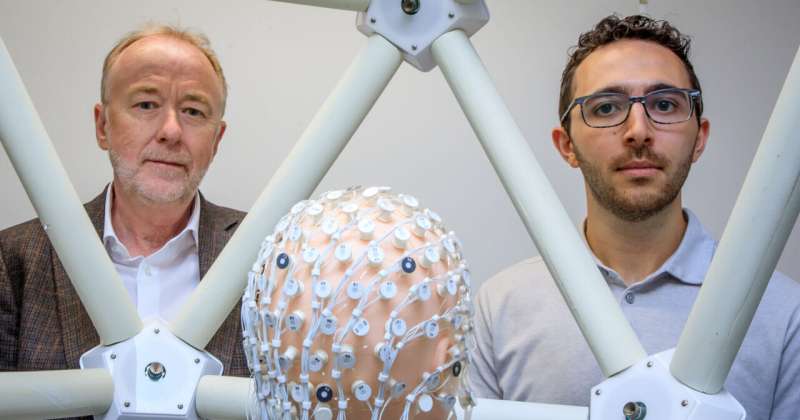This article has been reviewed according to Science X's editorial process and policies. Editors have highlighted the following attributes while ensuring the content's credibility:
fact-checked
peer-reviewed publication
trusted source
proofread
Neuroscientists use brain activity patterns to reveal thoughts of brain-injured patients

The very thought of being 'locked in' following a brain injury or even aware during general anesthesia induces fear because it awakens the classic terror trope of being buried alive. But what does it mean to be awake, but entirely unable to respond, and what can this tell us about consciousness itself?
In a new paper published in the journal Lancet Neurology, Western University neuroscientist Adrian Owen and his colleagues at Western, Lawson Health Research Institute and Harvard University describe new developments in the field of neuroimaging that can reveal the thoughts, actions and intentions of brain-injured individuals based solely on the pattern of activity observed in their brain. Most importantly, this breakthrough can be used to predict survival rates of intensive care unit (ICU) patients.
"Using technology developed at Western, we are now able to detect conscious awareness and even communicate with some patients who appear to be comatose in the ICU following a serious brain injury," said Owen, professor of cognitive neuroscience and imaging at Western's Schulich School of Medicine & Dentistry and the department of psychology.
Owen and his team now combine different neuroimaging methods, including functional magnetic resonance imaging (fMRI), electroencephalography (EEG) and functional near-infrared spectroscopy (fNIRS) to assess patients at the bedside in the first few days after their brain injury.
"We are making incredible progress," said Karnig Kazazian, research associate in the Owen Lab and first author of the paper. "For the first time, we are able to predict who will survive and who is less likely to, and this has huge implications for how clinical resources are allocated."
Neuroimaging can predict recovery
In the paper, Owen, Kazazian and their collaborators introduce a novel decision tree approach, which will guide ICU clinicians around the world in using functional neuroimaging technology to assist them with making difficult clinical decisions and determining when they can confidently rely on existing methodologies.
"There's a lot of uncertainty about when brain imaging can really help," said Kazazian. "But we now know that we can accurately predict recovery from a serious brain injury if we use the right technique at the right time."
The new recommendations will have profound implications for clinical care, diagnosis, prognosis, ethics and medical-legal decision-making after severe brain injury. The study also sheds light on more basic scientific questions about how consciousness is measured and the neural representation of our own thoughts and intentions.
"We talk to many families with loved ones who are existing on the border between life and death," said Owen, a Lawson scientist. "In almost every case, they express a strong preference for being informed about the outcomes of our neuroimaging assessments. They want to know that doctors, clinicians and scientists have tried everything, that everyone has gone the extra mile."
More information: Karnig Kazazian et al, Detecting awareness after acute brain injury, The Lancet Neurology (2024). DOI: 10.1016/S1474-4422(24)00209-6




















